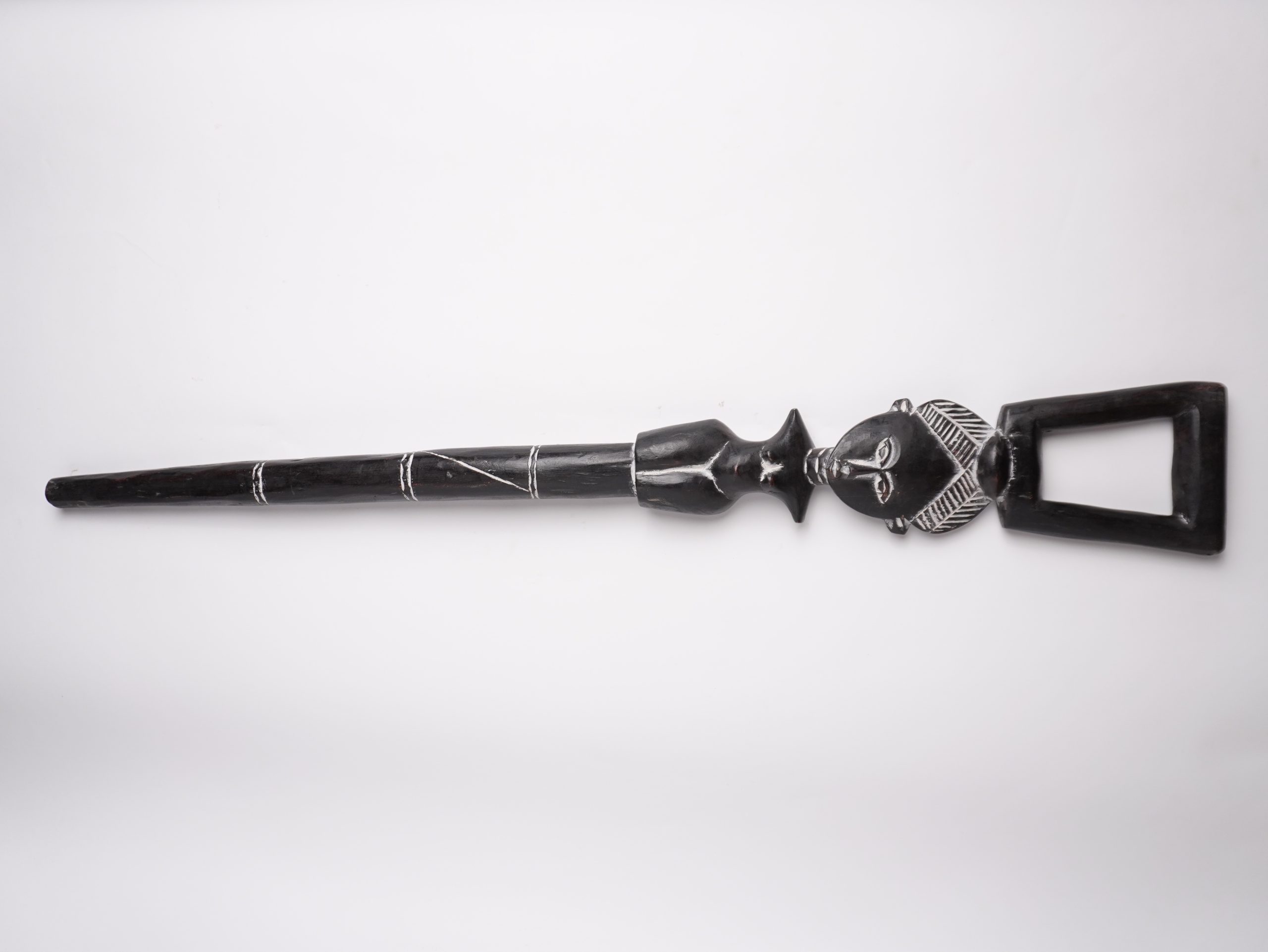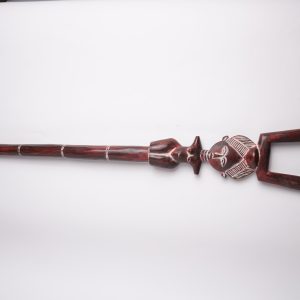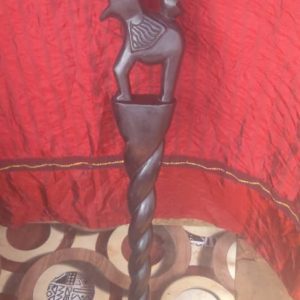African Walking Stick An African walking stick is a handcrafted item rich in both function and cultural significance. Traditionally carved from sese wood or other durable local hardwoods like ebony or neem, these sticks often feature elaborate detailing such as spiraled shafts, animal motifs, tribal faces, or geometric patterns. One such example includes a twisted design with brown and black hues that not only highlights expert craftsmanship but also adds decorative flair. Compared to standard sticks, premium versions tend to be thicker and exhibit more intricate carvings, making them stand out as symbols of prestige. Cultural Significance: In many African communities, walking sticks are more than mobility aids—they symbolize respect, dignity, and social status. Particularly when held by elders, the stick becomes a representation of wisdom accumulated over the years. The carvings and patterns on the stick can reveal a person’s tribal affiliation, societal role, or political stance, turning the item into a narrative artifact. Functional and Symbolic Roles: Walking Stick: Status Symbol: In traditional settings, those who carry elaborately carved walking sticks are often leaders or respected elders. ⦁ Artistic Value: They serve as expressions of cultural heritage and personal identity through detailed craftsmanship. ⦁ Practical Use: Many are functional aids for support and balance while walking, particularly among the elderly. Stirring Stick: Culinary Use: In Ghana and other parts of Africa, wooden sticks are also used for cooking. Known as turning sticks or banku sticks, they help in stirring thick local dishes like banku, porridge, and yam. ⦁ Cultural Tool: These sticks may vary in complexity, with some featuring smooth finishes and others adorned with subtle carvings, reflecting regional cooking traditions.
OBAA SIMA WALKING STICK







